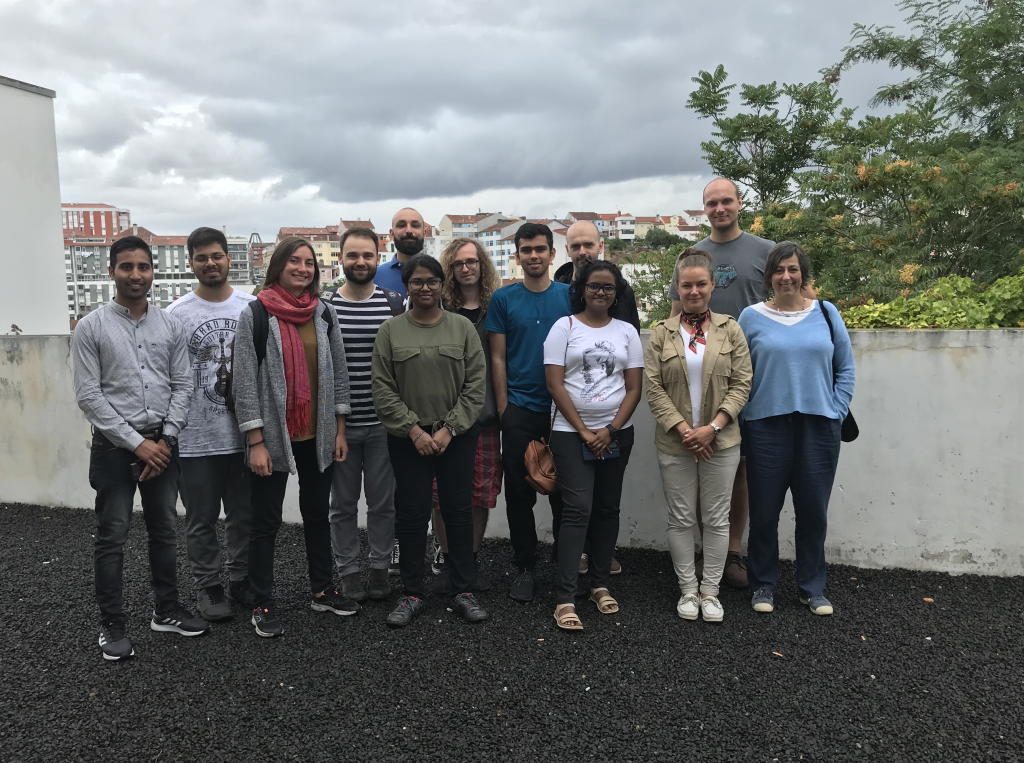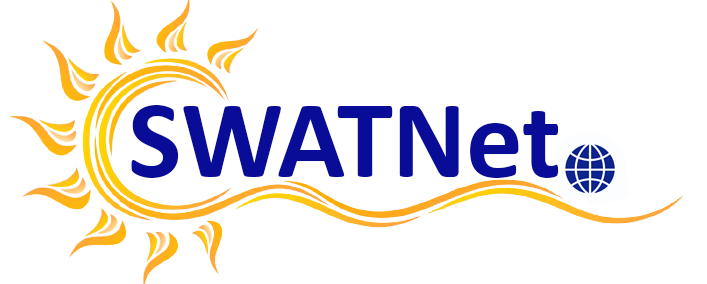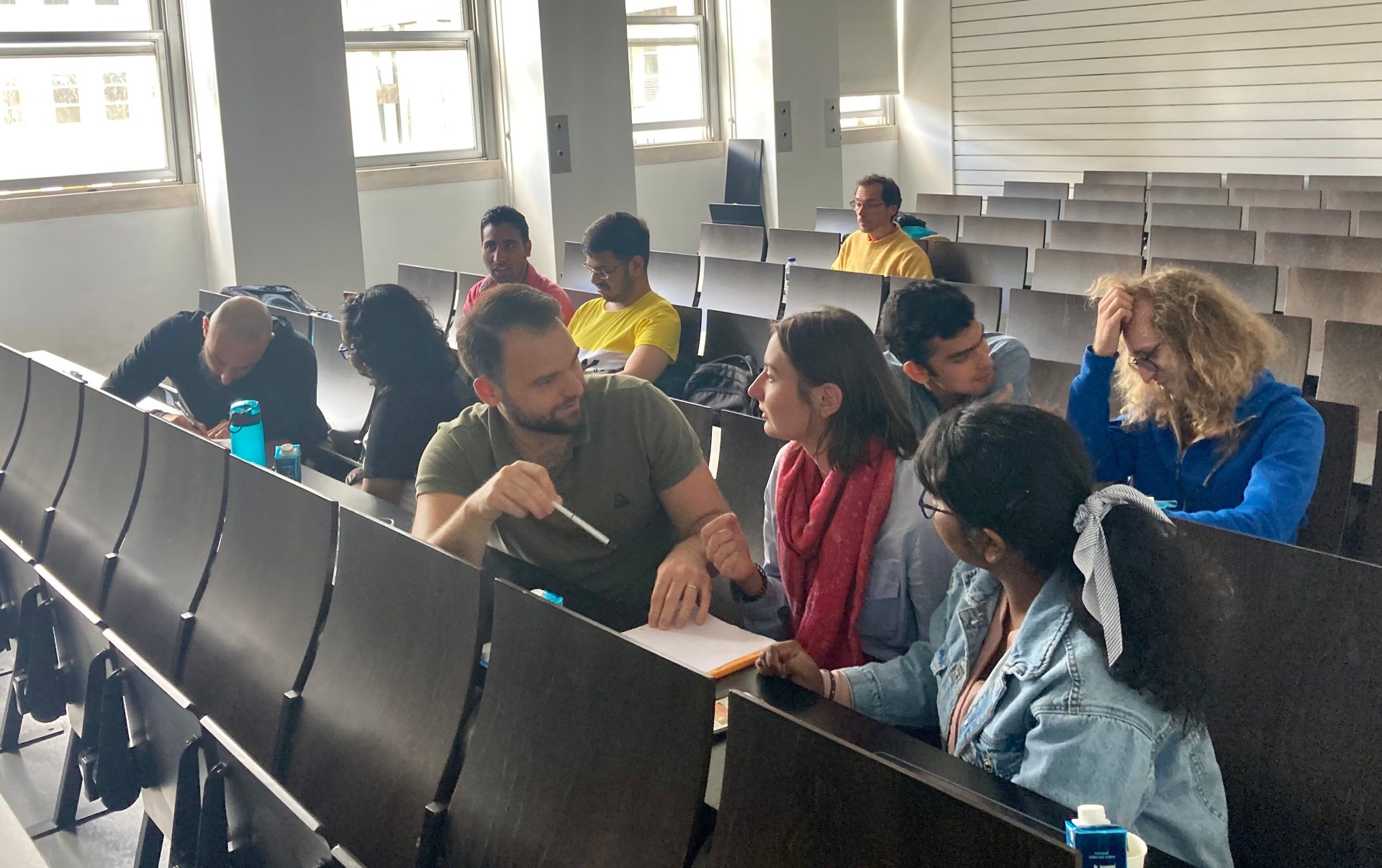
Learning Science Communication Skills in Coimbra
text: Emilia Kilpua
We finally met face-to-face! SWATNet Workshop 4 was organized in the historic city of Coimbra on June 20-22, 2022. Teresa Barata from the network oversaw the local organization and the program.
On Monday the trainers were Catarina Leote and Sérgio Pereira from Astrophysics and Space Science Institute, University of Lisbon and on Tuesday the science communication coordinator Ana Carvalho from Institute of Interdisciplinary Research, and Marta Costa and Karine Paniza from the communication department of the University of Coimbra. The Wednesday’s session were directed by Lea Urpa from the Science Basement outreach group from Finland.
Communicating Science
We scientists have a responsibility to tell the wider public about our research and its results. Why? It is for the common benefit to spread scientific knowledge and it is usually taxpayers’ money that funds us. It can also deepen your own enthusiasm and helps to see a wider perspective.
Communicating science effectively is however not easy. It is very different from writing scientific papers or presenting at the conferences. The important W’s of science communication we learned are: What? Why? Who? When? Where?
The key is to avoid scientific jargon. We are so used to technical terms in our everyday work that incomprehensible words just sneak in. Another challenge is that the audience may vary from school kids to policy makers and seniors. Give real life examples that the listeners can connect to. For example, students made a nice analogy by comparing coronal mass ejections to erupting volcanoes.
The workshop consisted of lectures, hands-on exercises and media training. For example, Students presented three-minute pitch talks on space weather tailored to different audiences, gave each one-minute summary of their PhD project and practised turning their scientific paper into a popular article. They also got useful tips on how to nail an interview and rehearsed being in front of a camera.
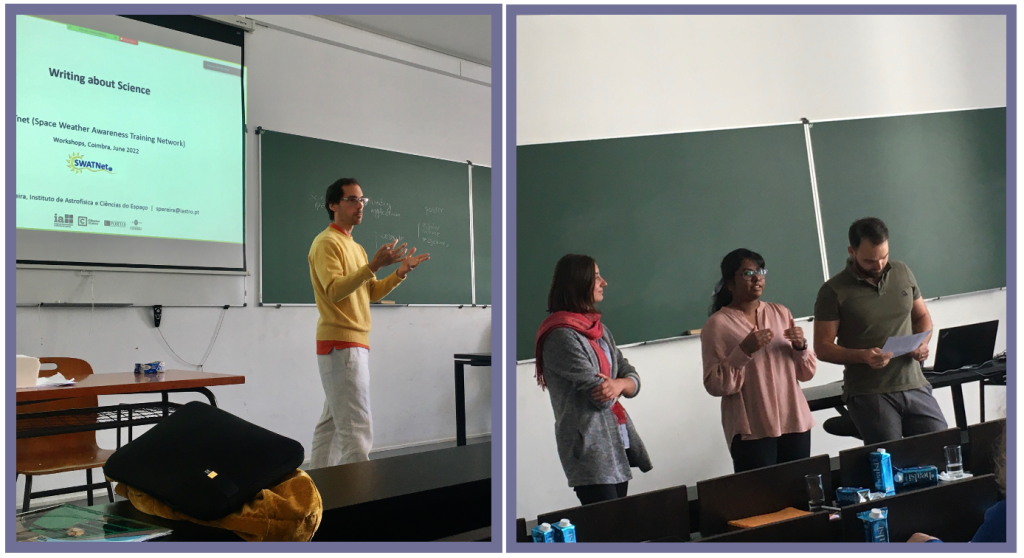
Up to the Observatory
The highlight of this workshop was that all students met in person. To celebrate this Teresa had planned a loose program with several social events.
On Monday evening we had a barbeque and visited the Geophysical and Astronomical Observatory of the University of Coimbra. The observatory dates to the early 1700s and it was relocated to its current place at Alto de Santa Clara in the 1950s. The site hosts a telescope with a four meter focal length that is used mainly for educational purposes and one of the oldest spectroheliographs in the world.
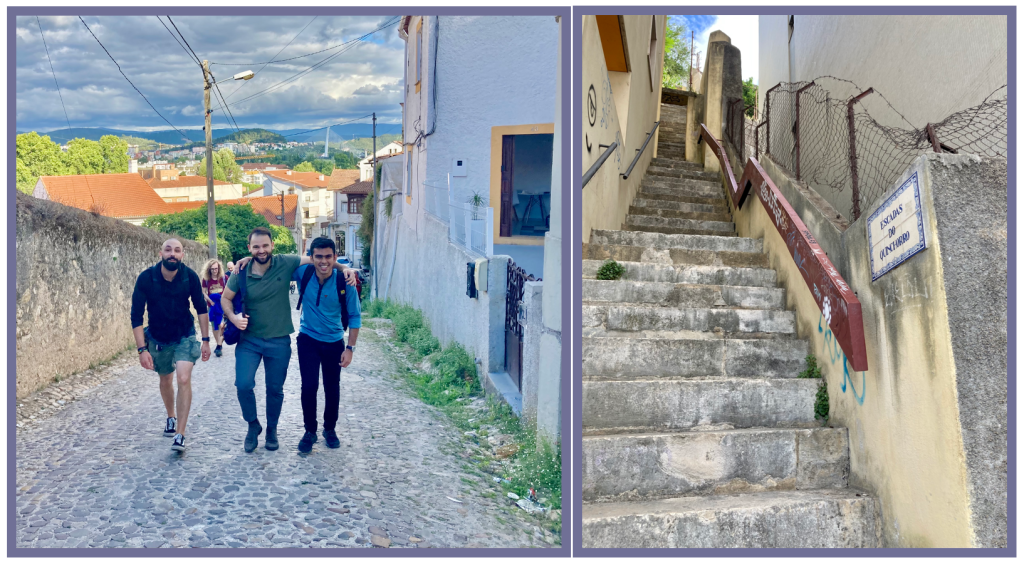
The sky was cloudy so we could not observe with the telescope, but we admired old astronomical instruments at the museum, relaxed at the planetarium and saw the impressive spectroheliograph. Scientists have used the spectroheliograph to take daily images of the Sun since 1927 in spectral lines like Calcium and Hydrogen-alpha. An important update happened in 2007 when a CCD camera was installed. We are using this unique long-term data in some SWATNet research projects.
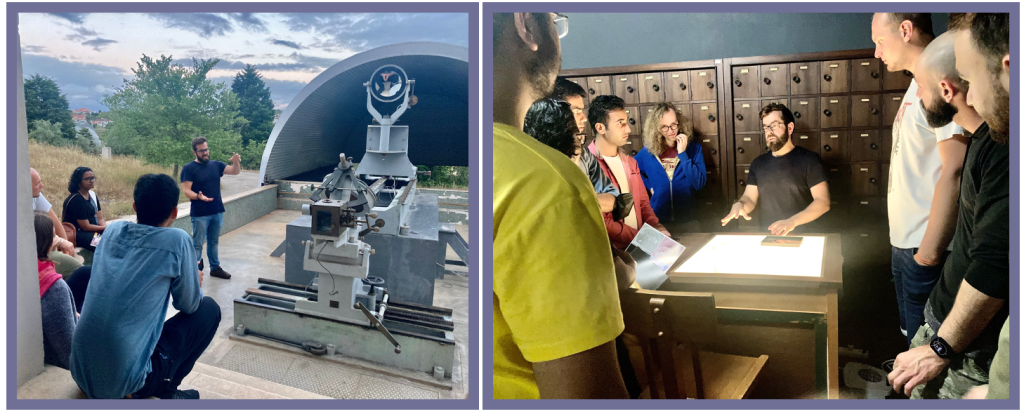
Life of a 17th century PhD student
On Tuesday morning we had a tour at the university with a wonderful guide describing vividly the life there in past times. The university was first established in Lisbon in 1290. Story says that the bustling harbour town had too many distractions for young minds, and it was relocated to the hills of a more peaceful Coimbra in 1537.
Students back in the days had quite different lives. We first visited a student prison! Some inmates had committed real crimes but being late for the lecture was enough to be sentenced. The students’ prison was however a much better option than the communal prison that had no windows, toilets, or food.
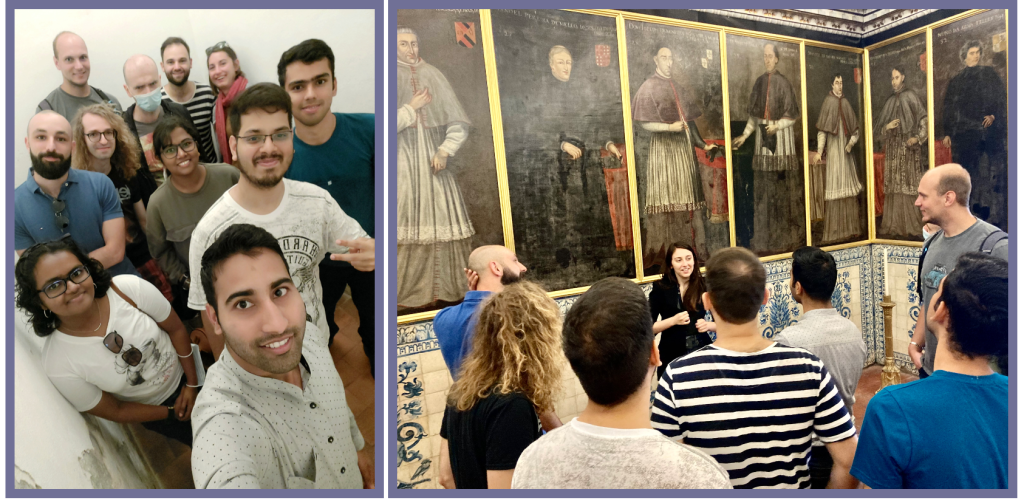
The prison was not the scariest place we visited. This honor goes to the Hall of Private Examination. Student were escorted there one by one in the middle of the night by the guards and then interrogated by the professors. The serious looking past deans were watching over from the dark portraits surrounding the walls of the room. Those who succeeded got a diploma. Those who failed got three more years at the university.
We also got a chance to see the Joanina Library. It was founded at the dawn of the age of the enlightenment and is considered as one of the most beautiful libraries in the world. Over 700,000 volumes there are guarded by a colony of bats! They come out during the night and eat bugs that could destroy precious books.
You could feel the history around the cobblestone streets and old buildings of Coimbra university. It was so nice to be back to normal interactions and combine training with these inspiring visits.
